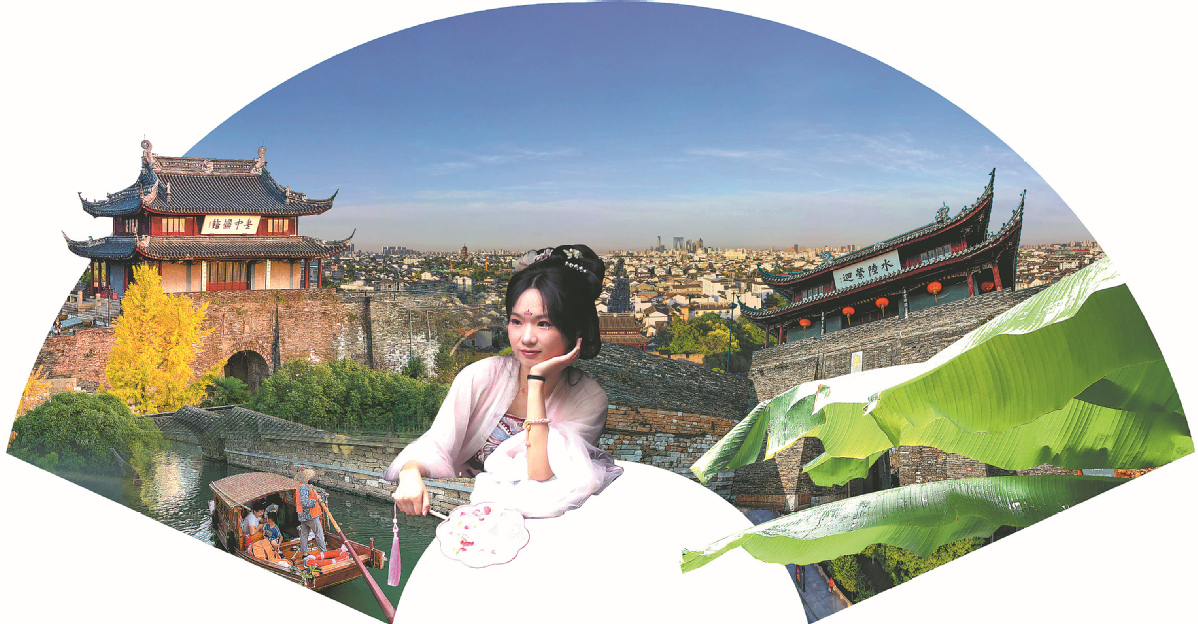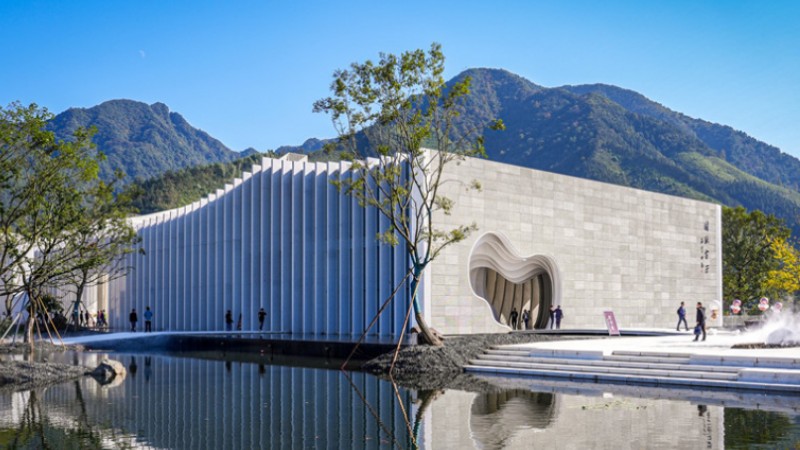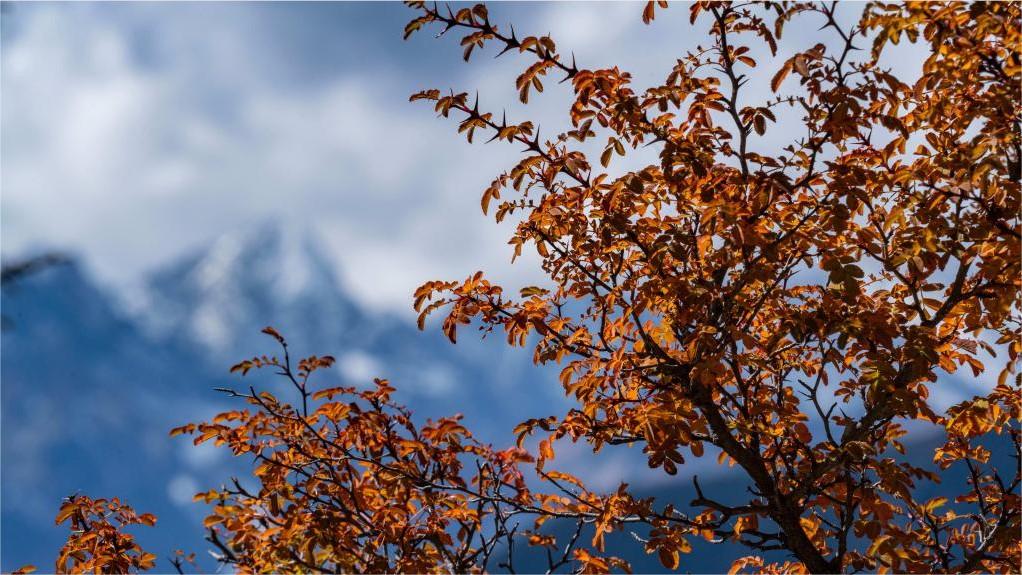Modern touches help safeguard Suzhou's past

Pingjiang Road and the Suzhou Museum are among the attractions in the 2,500-year-old city. ZHOU LIANG/WANG JIANZHONG/FOR CHINA DAILY
Precious treasures preserved, ancient properties restored
The city of Suzhou in Jiangsu province has long been a dream destination for lovers of Chinese history and culture.
Dating back some 2,500 years, the city evokes a sense of elegance and charm with its picturesque canals, traditional gardens and ancient streets.
Suzhou is home to numerous alleyways and old houses, with its graceful willow trees bringing a sense of calm to visitors and residents.
At the heart of the city lies Pingjiang Road. Situated in Gusu district, the thoroughfare is a living testament to a glorious past and thriving future.
Pingjiang Road is located alongside the Pingjiang River, and the Pingjiang Road Historical Block is the city's best-preserved area.
The road's layout has basically remained unchanged since the days of the Tang Dynasty (618-907) and the Song Dynasty (960-1279).
President Xi Jinping emphasized during his visit to Jiangsu in July that Pingjiang Road is a precious treasure for the inheritance and promotion of traditional Chinese culture, and the road should be used well and protected.
It is not only important to inherit the road in material forms, but also in people's hearts, he said.
The authorities in Suzhou have invested heavily to preserve the city's ancient architecture, customs and fascinating stories that have emerged through the ages. Pingjiang Road stands as a shining example of the city's commitment to such efforts.
In March 2019, the first phase of the Suzhou Ancient City Revival Architectural Design Workshop, jointly organized by the Suzhou Municipal People's Government and the China Architecture Society, officially started.
No 30 Jianxin Lane was selected for a research project. By using a strategy of "preserving the old while introducing the new", fresh technologies were applied to old properties in the lane, and traditional garden aesthetics were integrated with future lifestyles, providing new methods to revive the ancient city.
However, as the protection work gradually progressed, problems arose, with urban renewal and protection of the ancient city becoming an extremely complex project.
The Leading Group for the Protection of Suzhou National Historical and Cultural City was formed in April last year to efficiently coordinate and resolve various issues regarding protection work in the city. The group is headed by the main leaders of the municipal Party committee and the municipal government.
Fang Wenbang, Gusu district chief, who also heads the Suzhou National Historical and Cultural City Conservation Zone's Party Working Committee, said: "In the past, we vigorously developed the new city while protecting the ancient one, laying the foundation for Suzhou's integration of old and new. We now need to promote the conservation of the ancient city from a higher perspective and with a broader vision."

Tourists admire Lion Grove Garden in Suzhou. DU LIANYI/CHINA DAILY
Repairs underway
Repair work began this month on many old houses in Suzhou, using original materials and craftsmanship. Flowers and plants have been transplanted, and rockeries and ponds reconfigured in courtyards and gardens.
Toilets have been renovated, streets and alleyways beautified, a new sewage system built, and local households now boast tap water, flush toilets and internet access.
These significant improvements have been welcomed by residents who have long lived on Pingjiang Road.
Jiang Qing, who has lived on the road for more than 30 years, said: "Many of my relatives now want to spend their holidays at my house. They prefer it to the numerous five-star hotels in Suzhou.
"Life was very different before the government began to make improvements to the environment. My relatives even refused to eat at my home, because they thought the nearby river was smelly. Mosquitoes were also everywhere."
To better restore and protect the road, the authorities in Gusu implemented the Ancient City Cellular Anatomy Project in 2020, conducting in-depth investigations in the 54 neighborhoods of the ancient city, which cover an area of 14.2 square kilometers.
The project, a finely detailed conservation initiative, was launched by the Suzhou National Historical and Cultural Famous City Protection Zone and Gusu district. It is the first of its kind among the 140 historical and culturally renowned cities in China.
Traditional residential and other structures feature in the project, as well as additional elements, forming the "basic cells" that constitute the ancient city's framework.
A comprehensive survey is being conducted to cover all aspects of the ancient city's neighborhoods and protect historical remains. A digital image of the old city is being created by using collected data and digital technology.
The image will feature more than 4,000 protected objects in 18 categories throughout Gusu. A Digital City Operation and Management Center will also be established to enhance management efficiency by using artificial intelligence.
This year's meetings of the city's legislature and political advisory body, which are known as Suzhou's two sessions, set a goal for renovation work on 50 old residential communities to be completed before the end of December.
During the 14th Five-Year Plan (2021-25) period, Suzhou aims to renovate 347 old residential communities, benefiting 107,000 households.
The city is exploring a new approach of "development in conservation, and conservation in development".
Preserving and renovating ancient houses brings new vitality to these properties through the introduction of fresh business formats, ensuring that inheritance and action go hand in hand, and striking the best balance between preservation and use.
Fang, the district chief, said this is the only way in which these ancient houses "truly come to life".
As the first, and currently the only, national historical and cultural city conservation zone in China, Gusu will further innovate conservation, Fang added.
"By adhering to the philosophy of 'use is the best protection', Suzhou is striving to expedite the revitalization and use of its ancient buildings and old houses. This initiative features not only government leadership and participation from State-owned enterprises, but also the increasing involvement of market entities and social capital," Fang said.

Suzhou, Jiangsu province, is an ancient city with a rich history. DU LIANYI/CHINA DAILY/LI ZHIXIANG/ZHOU LIANG/WANG JIANZHONG/FOR CHINA DAILY
Numerous attractions
Visitors to Pingjiang Road pose for photographs while wearing traditional hanfu costumes, eat time-honored dim sum, create ancient Chinese New Year prints, and enjoy the Suzhou Pingtan art form while drinking tea. There is even a Starbucks outlet on the ancient street.
At Cat's Sky City store on Pingjiang Road, Qiao Lanrong teaches visitors to make Taohuawu Woodblock New Year Prints, and will frame the prints if they want to take them home.
Originating in the Ming Dynasty (1368-1644) and flourishing in the Qing Dynasty (1644-1911), these prints were dubbed the "Flower of the Eastern Ancient Art". In 2006, the prints were included in the first batch of items on China's national intangible cultural heritage representative list.
Qiao, who has been studying such prints for more than 20 years and is a representative inheritor of the art form, said, "I'm glad to have the opportunity to introduce domestic and foreign visitors to these beautiful prints."
Suzhou has six world-class intangible cultural heritage projects and 32 such projects at national level with 50 inheritors. At provincial level, there are 124 intangible cultural heritage projects with 94 inheritors.
Data from the Suzhou Municipal Political Consultative Conference show there are 159 intangible cultural heritage projects at municipal level with 334 inheritors, and 528 representative projects at county level with 536 inheritors. Many of the inheritors have been consulted about protection of the ancient city.
As of this year, Suzhou had produced five versions of the protection plan for historical and cultural cities, completed the plan to protect historical and cultural blocks, and the control plan for ancient city neighborhoods.
The city has also introduced some 50 local rules and documents to establish a comprehensive system for legal regulations.
Zhu Yidong, director of the Ancient City Conservation Commission in Gusu, said the introduction of social capital is important to inject vitality into protecting the ancient city.
"We will conduct inspections regularly to ensure the necessary protection measures are in place, leaving no room for negligence," Zhu said.
A total of 438 buildings and 1,141 cultural relics have been preserved in Gusu. As witnesses to Suzhou's historical and cultural heritage, these ancient properties are a microcosm of the city's history.
The protection of Pingjiang Road is just one example of the efforts being made in Suzhou to restore the city's ancient treasures.
Fang, the district chief, said the authorities in Gusu will strive to achieve better results through government-led, market-based and multiparty participation, and make contributions to the world by protecting the ancient city.
Photos
Related Stories
- Swire Coca-Cola starts construction of new plant in China's Suzhou
- Suzhou: Thriving amid low-carbon development
- Aerial view of Suzhou, east China's Jiangsu Province
- Gorgeous sunset in heavenly Suzhou
- Suzhou, paragon of China's revitalized old town
- A glimpse into Suzhou Industrial Park
- View of historic and cultural block of Pingjiang Road in east China's Suzhou
- Experiencing the first passenger trial operation of Suzhou Line 11
- Suzhou Culture and Tourism Promotion held in Budapest, Hungary
- Picturesque Wujiang of Suzhou, E China's Jiangsu fuses efforts to boost development
Copyright © 2023 People's Daily Online. All Rights Reserved.









